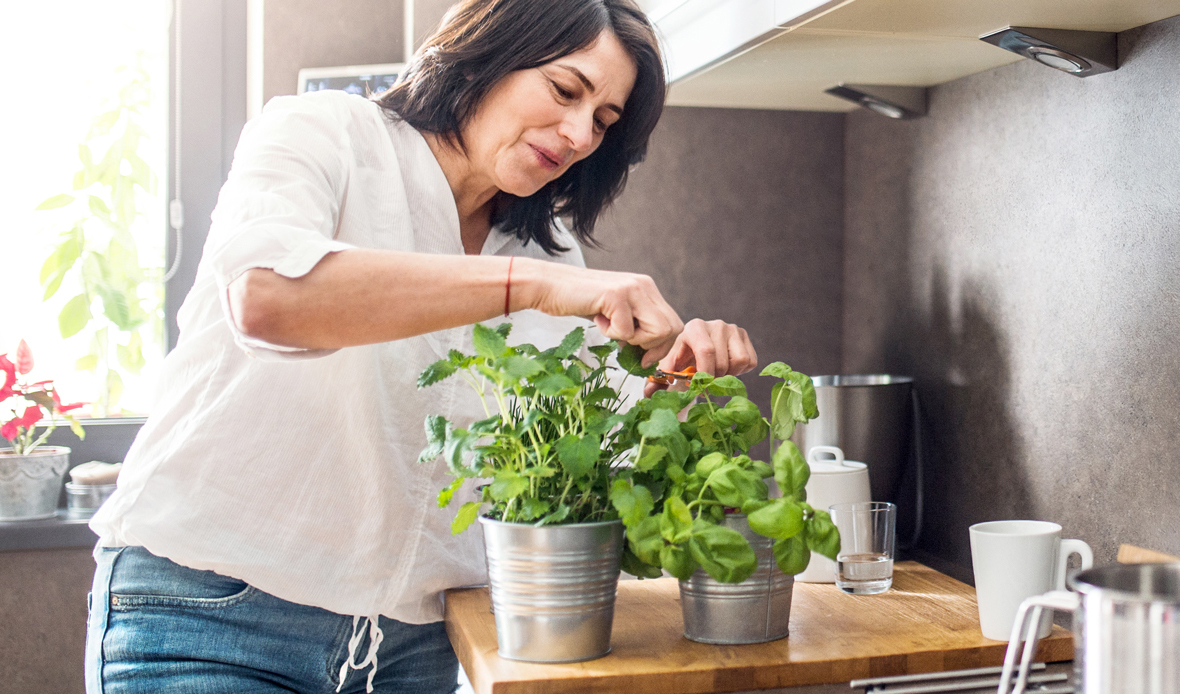
The secret to delicious home-cooked meals: fresh herbs. Parsley. Basil. Thyme. Sage. Rosemary. Oregano. Mint. From sauces, meat, and veggies to teas, desserts, and mocktails, these leafy bursts of flavor turn anything into a celebration.
It’s time to forget about spending a few dollars for a tiny container from the grocery store, if you have sunny windows or a little outdoor space, you’re ready to start your own herb garden. It only takes a little space, time, and resources, and the benefits of these plants go way beyond big flavor.
They’re packed with health-boosting plant chemicals.
Vitamins and minerals have gotten most of the press for the last century or so. But researchers continue to identify other parts of plants that help prevent disease and prolong life, like polyphenols.
Herbs happen to come with a lot of polyphenols per square inch. Their antioxidant properties help reduce inflammation in the body, which is vitally important for the prevention of just about every disease process—especially heart disease.1 It takes more than a snip of parsley to achieve major effects, of course. But it all adds up.
They promote mind and body wellness.
Researchers analyzed a large collection of studies from around the world comparing groups of people who garden and those who don’t. The results were unquestionable: People who nurture plants have less depression and anxiety, lower stress, and higher quality of life.2
Don’t worry if you don’t think you have a green thumb, even a quarter cup of herbs is a harvest. If you have windows that get 5–8 hours of sunlight, a little patch of dirt, or some space outdoors for pots, you’re ready to get started.
You also don’t have to start from seeds. Many garden centers have hardy plants ready to take their place in a window or on your back porch—which means you get to that green goodness faster.
Indoors
Outdoors
Harvesting hacks
What are you waiting for? Basil for pesto. Mint for tea and tabbouleh. Oregano for pasta salad. Thyme for squash and beets. Fresh, pungent flavors like these are as easy as watching, watering, and snipping. Choose your favorite healthy flavors and get growing.
Explore even more healthy eating ideas by talking with a MOBE Guide. Get started today.
References:
1. Elizabeth Opara and Magali Chohan, “Culinary Herbs and Spices: Their Bioactive Properties, the Contribution of Polyphenols and the Challenges in Deducing Their True Health Benefits,” International Journal of Molecular Science 15, no. 10 (October 2014): 19183-202, https://www.ncbi.nlm.nih.gov/pmc/articles/PMC4227268/.
2. Masashi Soga, Kevin J. Gaston, Yuichi Yamaura, “Gardening is Beneficial for Health: A Meta-Analysis,” Preventive Medicine Reports 5 (March 2017): 92-99, https://www.nejm.org/doi/full/10.1056/nejmoa030808#t=article.
3. “Growing Herbs in Home Gardens,” University of Minnesota Extension, https://extension.umn.edu/vegetables/growing-herbs-home-gardens#watering-930511.